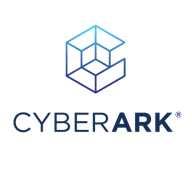

Anomali and CyberArk Identity are competing products in the cybersecurity field. While Anomali is appreciated for its competitive pricing and support, CyberArk Identity is seen as having the upper hand due to its extensive features and the value of its services.
Features: Anomali excels in advanced threat detection, comprehensive threat intelligence data, and competitive pricing. CyberArk Identity stands out with robust identity management, Single Sign-On, and Multi-Factor Authentication. The primary distinction is Anomali's focus on threat assessment versus CyberArk's emphasis on identity security.
Ease of Deployment and Customer Service: Anomali offers straightforward deployment with comprehensive support. CyberArk Identity provides a scalable deployment model that integrates into various IT environments, though it might require more initial support. Anomali’s deployment process is simpler, but CyberArk’s scalability offers broader adaptability.
Pricing and ROI: Anomali provides a cost-effective setup appealing to budget-conscious organizations, delivering significant ROI through its security intelligence focus. CyberArk Identity may have a higher initial cost; however, it delivers considerable ROI through its comprehensive identity security features, justifying the investment for long-term security enhancements.

Anomali delivers advanced threat intelligence solutions designed to enhance security operations by providing comprehensive visibility into threats and enabling real-time threat detection and management.
Anomali stands out in threat intelligence, offering an innovative platform that integrates data to identify and analyze threats effectively. It enables teams to streamline threat detection processes and respond to incidents with increased agility. With a focus on accuracy and efficiency, Anomali supports cybersecurity professionals in making informed decisions to safeguard their networks consistently.
What are Anomali's core features?In industries like finance and healthcare, Anomali is implemented to address specific challenges like compliance and data protection. By using this platform, organizations gain the ability to adapt to evolving threats, ensuring robust and adaptable security postures tailored to industry demands.
CyberArk Identity is a versatile identity management solution suitable for a wide range of enterprises. It is designed to enhance enterprise security and improve user experience. Its focus on security, compliance, and operational efficiency, combined with positive user feedback, makes it a strong contender in the identity management space.
CyberArk Identity offers a robust suite of features to manage user identities and access privileges. It focuses on securing access to resources across various environments, including cloud and on-premises applications. Its capabilities include single sign-on (SSO), multi-factor authentication (MFA), lifecycle management, and privileged access management. These features are engineered to streamline access control, enhance security, and ensure compliance with regulatory standards.
According to our user interviews, CyberArk Identity is praised for its reliability and user-friendly interface. IT professionals highlight the ease of integration with existing systems, while business executives appreciate the visibility it provides into access and identity management across the organization. Users also commend the responsive customer support, which is crucial for enterprise-level solutions.
IT Professionals found that CyberArk Identity's focus on multi-layered security significantly reduced the risk of data breaches and unauthorized access. With a centralized dashboard and automation features, you can streamline identity and access management tasks, saving time and reducing complexity. Finally, it helps meet various compliance requirements.
We monitor all User Entity Behavior Analytics (UEBA) reviews to prevent fraudulent reviews and keep review quality high. We do not post reviews by company employees or direct competitors. We validate each review for authenticity via cross-reference with LinkedIn, and personal follow-up with the reviewer when necessary.